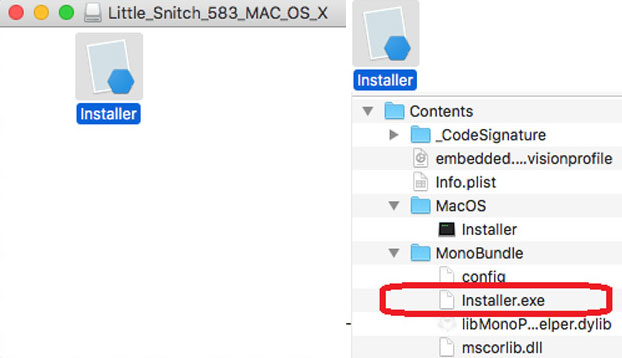Little Snitch For Macs
Without a license key, Little Snitch runs in demo mode, which provides the same protection and functionality as the full version. The demo runs for three hours, and it can be restarted as often as you like. The Network Monitor expires after 30 days. Turn it into a full version by entering a license key.
Little Snitch for Mac OS is a great little gem to protect your data from being sent out to third-party apps through the Internet. For instance, you can use Little Snitch to hamper the outgoing traffic and block websites and apps that require access to the data stored on your Mac.
Little Snitch For Mac
- Whenever an app attempts to connect to a server on the Internet, Little Snitch shows a connection alert, allowing you to decide whether to allow or deny the connection. No data is transmitted without your consent. Your decision will be remembered and applied automatically in the future.
- Other interesting Mac alternatives to Little Snitch are Radio Silence (Paid), TripMode (Paid) and Micro Snitch (Paid). Little Snitch is a firewall application that monitors and controls outbound internet traffic. If you're looking for more info about Little Snitch like screenshots, reviews and comments you should visit our info page about it.
- Apr 01, 2020 Little Snitch gives you control over your private outgoing data. Track background activity As soon as your computer connects to the Internet, applications often have permission to send any information wherever they need to.
- Little Snitch is a firewall application that monitors and controls outbound internet traffic. If you're looking for more info about Little Snitch like screenshots, reviews and comments you should visit our info page about it. Below you find the best alternatives.
- To put in perspective, the last upgrade of Little Snitch (version 2 to 3) was Fall of 2013, to support Mavericks 10.9. That was nearly four years ago guys. The current macOS is 10.12, so Little Snitch v3 has supported FOUR MAJOR RELEASES OF MACOS and a fifth one on the way in that time with LS v3.
In other words, Little Snitch provides flexible options to grant or block permissions to Mac applications.
However, if you want to uninstall Little Snitch from your Mac, for you’ve your own reasons, then keep reading further.
Remove Little Snitch App Completely From Mac OS
Dragging the application to Trash folder will remove the application, but, unfortunately, not all the core files of Little Snitch are deleted and the files still reside on your Mac.

Also, All-in-one installers like AppZapper and AppCleaner may often fall short with complex applications. But if you have an app cleaner installed on your Mac, give it a shot, otherwise use the default Little Snitch uninstaller.
To make the removal procedure easier, Little Snitch has its own uninstaller that can be found using the following steps:
- Open Finder, search for Little Snitch DMG file.
- Click on Little Snitch Installer — yes, installer!
- A window pops up with two options: Uninstall and Install.
- Choose Uninstall to remove Little Snitch from Mac. To install the app again, click on Install.
Download Little Snitch For Windows
Pretty easy, right? But you haven’t won yet. There are some user files that needs to be deleted to permanently remove Little Snitch from your computer.
So, if you wish to completely remove the stored preference on your Mac, then delete the following files and folders, as mentioned at Obdev:
/Library/Application Support/Objective Development/Little Snitch/
~/Library/Application Support/Little Snitch/
~/Library/Preferences/at.obdev.LittleSnitchConfiguration.plist
~/Library/Preferences/at.obdev.LittleSnitchNetworkMonitor.plist
~/Library/Preferences/at.obdev.LittleSnitchInstaller.plist
The “~” tilde sign refers to your home folder.
That’s it! All the redundant files of Little Snitch are gone. In case you want to reinstall the app, you have to launch the .DMG file again.
Related posts:
Latest Version:
Requirements:
Mac OS X
/orange-tree-samples-eletric-guitar-vst-download-evolution-strawberry.html. Author / Product:
Objective Development Software GmbH / Little Snitch for Mac
Old Versions:
Filename:
LittleSnitch-3.6.dmg
MD5 Checksum:
88f95ddd7c3e4b7819e7110a8136713a https://ameblo.jp/stemacelad1975/entry-12632943768.html.
Free Little Snitch For Mac
Little Snitch informs you whenever a program attempts to establish an outgoing Internet connection. You can then choose to allow or deny this connection, or define a rule how to handle similar, future connection attempts. This reliably prevents private data from being sent out without your knowledge. Little Snitch for Mac runs inconspicuously in the background and it can also detect network related activity of viruses, trojans and other malware.
Features and Highlights
Silent Mode – Decide Later
There are times where you don’t want to get interrupted by any network related notifications. With Silent Mode you can quickly choose to silence all connection warnings for a while. You can then later review the Silent Mode Log to define permanent rules for connection attempts that occurred during that time.
Research Assistant
Have you ever wondered why a process you’ve never heard of before suddenly wants to connect to some server on the Internet? The Research Assistant helps you to find the answer. It only takes one click on the research button to anonymously request additional information for the current connection from the Research Assistant Database.
Automatic Profile Switching
Rules can be arranged in different profiles like “Home”, “Office” or “Mobile Internet”. This allows you to use different sets of filter rules depending on the network you are currently connected to. Profiles can be activated either manually from the status menu, or automatically, whenever you join a network that’s associated with one of your profiles.
Firewall for incoming connections
Little Snitch for macOS not only reveals any outgoing network connection attempt to make sure that sensitive data doesn’t leave your computer without your consent. The inbound firewall in LittleSnitch provides you with the same level of control for incoming connections.
Note: Requires 64-bit processor. The demo runs for three hours, and it can be restarted as often as you like. The Network Monitor expires after 30 days.